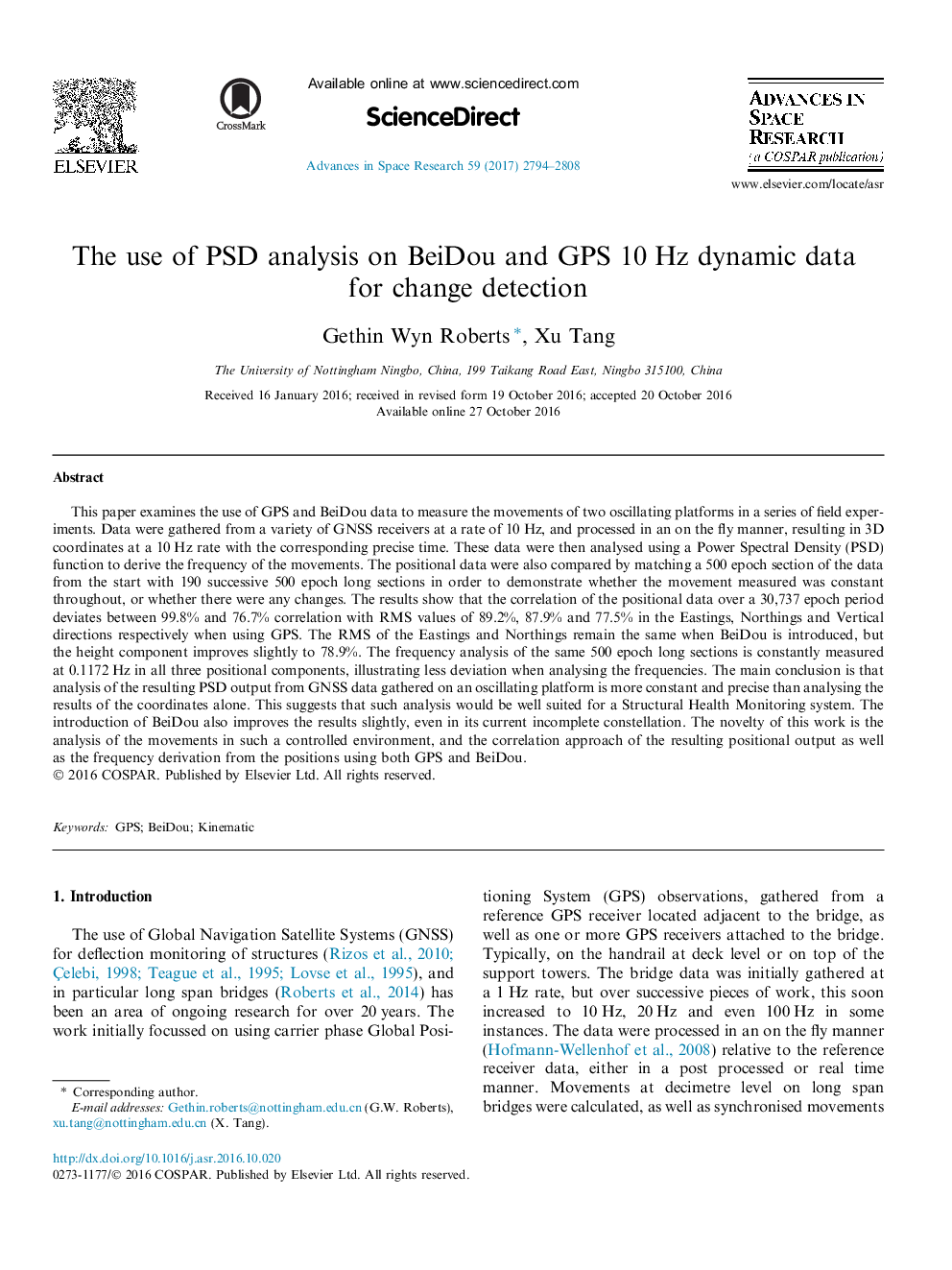| Article ID | Journal | Published Year | Pages | File Type |
|---|---|---|---|---|
| 5486193 | Advances in Space Research | 2017 | 15 Pages |
This paper examines the use of GPS and BeiDou data to measure the movements of two oscillating platforms in a series of field experiments. Data were gathered from a variety of GNSS receivers at a rate of 10Â Hz, and processed in an on the fly manner, resulting in 3D coordinates at a 10Â Hz rate with the corresponding precise time. These data were then analysed using a Power Spectral Density (PSD) function to derive the frequency of the movements. The positional data were also compared by matching a 500 epoch section of the data from the start with 190 successive 500 epoch long sections in order to demonstrate whether the movement measured was constant throughout, or whether there were any changes. The results show that the correlation of the positional data over a 30,737 epoch period deviates between 99.8% and 76.7% correlation with RMS values of 89.2%, 87.9% and 77.5% in the Eastings, Northings and Vertical directions respectively when using GPS. The RMS of the Eastings and Northings remain the same when BeiDou is introduced, but the height component improves slightly to 78.9%. The frequency analysis of the same 500 epoch long sections is constantly measured at 0.1172Â Hz in all three positional components, illustrating less deviation when analysing the frequencies. The main conclusion is that analysis of the resulting PSD output from GNSS data gathered on an oscillating platform is more constant and precise than analysing the results of the coordinates alone. This suggests that such analysis would be well suited for a Structural Health Monitoring system. The introduction of BeiDou also improves the results slightly, even in its current incomplete constellation. The novelty of this work is the analysis of the movements in such a controlled environment, and the correlation approach of the resulting positional output as well as the frequency derivation from the positions using both GPS and BeiDou.
